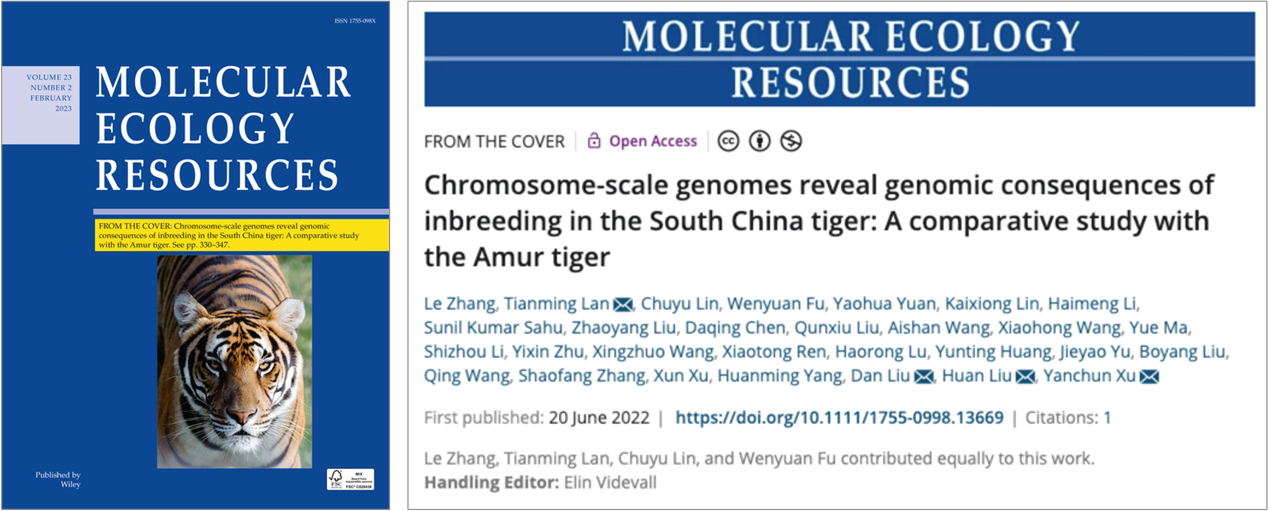A recent study carried out by BGI-Research, Northeast Forestry University, and other institutions revealed the genomics consequences of inbreeding in the South China tiger (SCT) by examining its chromosome-scale genomes and comparing it with the Amur tiger. The research, published as a cover story in Molecular Ecology Resources, provided strong scientific evidence for understanding the protection of this most critically-endangered subspecies of tiger.
 Chromosome-scale genomes reveal genomic consequences of inbreeding in the South China tiger: A comparative study with the Amur tiger is published as the cover story in Molecular Ecology Resources.
Chromosome-scale genomes reveal genomic consequences of inbreeding in the South China tiger: A comparative study with the Amur tiger is published as the cover story in Molecular Ecology Resources.
In the study, researchers assembled and characterized the first SCT genome and an improved Amur tiger genome. Both are high-quality with the best contiguity and completeness among any tiger genomes at the chromosomal level yet reported.
The results indicated that the effective population size of SCT experienced three phases of decline at around 5,000 to 1,000 years ago, 100 years ago, and since 1963, when the captive breeding of SCT began.
 South China tiger
South China tiger
SCT is considered functionally extinct in the wild by World Wildlife Fund and now only exists in captive environments. Only six wild SCTs have produced offspring since 1955 when China started protecting this species, and this has led to more than 200 captive individuals today. Due to the limited size of the population, inbreeding is unavoidable. Inbreeding depression, a phenomenon commonly occurring during inbreeding and resulting in high juvenile mortality and low reproduction, was observed among the captive population – in turn descended from six wild ancestors - and challenged the well-being of the SCT species.
The research found that during the inbreeding process, premature death and infertility in fact prevented harmful mutations from being passed on to the next generation, which in a way helped the species. In addition, researchers also found 170 mutations unique to South China tigers distributed in genes related to reproduction, growth, and development. Considering SCTs’ low reproductive rate, these loci on genes are considered extremely important for its conservation.
Dr. Anubhab Khan, a Research Associate on evolution and diversity at the University of Glasgow commented that the research produces some of the best tiger assemblies available so far and is comparable even to the domestic cat reference genomes. “These [chromosome-level tiger gene] assemblies have already started contributing to understanding not only the evolution of tigers but also how these populations can be sustained into the future”.
This research provides strong scientific evidence and support for the creation of effective and feasible protection strategies for SCTs, as well as abundant clues and reference genomes for understanding the mechanism of inbreeding depression in tigers.
Read the article: https://onlinelibrary.wiley.com/doi/full/10.1111/1755-0998.13669



